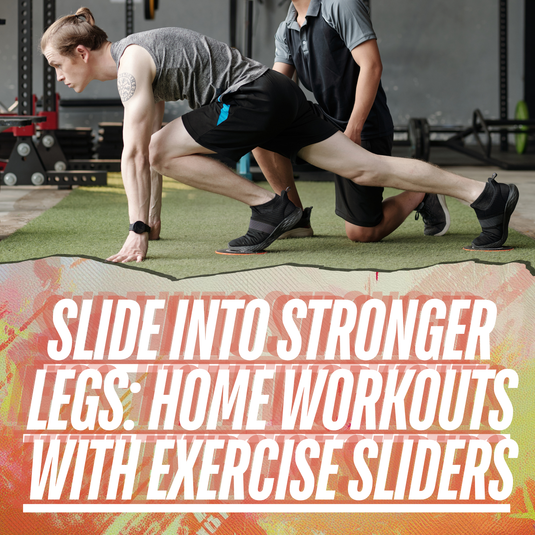Kettlebell Snatch: Benefits & Errors

⏱️ Estimated Read Time: 6 minutes
🧠 TL;DR
- Kettlebell Snatch: Benefits & Errors offers effective, accessible movements for targeted results.
- This guide is designed to help you move smarter, build strength, and stay consistent.
✍️ Summary
This post explores kettlebell snatch: benefits & errors in a way that’s actionable and easy to follow. Whether you're new to this style of training or leveling up, it includes practical takeaways for your routine.
📚 Table of Contents
The kettlebell snatch is a phenomenal movement at building strength, power, endurance and coordination. It’s a fairly complicated movement that can create a lot of pain and strife if done incorrectly so a focus on technique is crucial for success. Leaning on solid technique will allow you to do more, go heavier, and get a better overall session in. Understanding the kettlebell snatch benefits can help you maximize your workout potential and enhance your fitness routine.
What are the Kettlebell Snatch Benefits?
The snatch is a powerful move with any implement, but a kettlebell allows for a couple main benefits. With a kettlebell you can work unilaterally as opposed to both hands on a barbell. This builds single arm strength, rotational power, and balance. The single arm snatch creates an anti-rotational component that will create more stress on the trunk, highlighting the unique kettlebell snatch benefits.
How Does the Kettlebell Snatch Differ from Other Snatch Variations?
Typically with snatches the bar is dropped from the overhead position taking the eccentric out of the equation. The kettlebell snatch (single or double) creates added stress on the body by imposing a ballistic eccentric where you’re decelerating the bell on the downswing, redirecting the load and repeating the motion. This not only builds strength and power from the weight itself as the speed increases the load and requires more force, but since it can be done repeatedly it will help increase your work capacity. These kettlebell snatch benefits make it a unique and effective exercise, setting it apart from other snatch variations.
Why Choose Kettlebells for Single Arm Snatches?
Dumbbells can be done with one arm, but the weight of the dumbbell increases as the size goes up whereas kettlebells remain fairly compact. At a certain point it will get fairly awkward performing repeated snatches without touching the ground. The kettlebell snatch offers a more fluid and continuous motion, enhancing the overall workout experience and showcasing the snatch kettlebell advantages.
What are Common Mistakes in Kettlebell Snatching?
When performing the snatch here are five mistakes I see or hear from people fairly regularly.
-
Problem #1: Slammed Forearms
-
The solution: Loose grip and tight upswing
This is the most common mistake. From videos it looks like that bell comes up and over, landing square on the arm, but what you can’t see is the fluctuation in the grip during the movement. Your grip needs to adjust at different points in the movement. At some points it’s tight and at others fairly loose to allow for the movement of the bell during the weightlessness right before the peak. The other issue is that the weight travels too far in front of you on the upswing. Keep the bell tighter on the way up to avoid the nasty boomerang effect.
-
Problem #2: Tweaked Shoulders
-
The solution: Scap Pull Ups
It’s easy to keep that momentum going and overdo shoulder flexion reaching beyond what’s comfortable. The first thing I do with clients before snatching is establish overhead ROM and then practice scap pull ups. Grab a pullup bar or rings and dead hang. Pull yourself up only by depressing your scapula and engaging your lats. This “locks” your shoulder into place. By practicing this you’ll feel more comfortable overhead so when you increase the weight and speed of the movement you won't go too far.
-
Problem #3: Torn Hands
-
The solution: Loosen the grip
It’s easy to think you’ll need an incredibly tight grip on the bell during the snatch, but this only creates excessive friction that wreaks havoc on your hand. Combine a kung-fu grip with excessive weight and reps and your bloody hands are ready for the world to see how tough your workout was. In reality bloody, ripped hands aren’t a sign of a good workout. They’re a sign of too much too soon. Loosen the grip to allow for the bell to move seamlessly in your hand. At some points you’ll need more tension and at others less. I like to hook my fingers around the bell at the downswing and as the bell travels up and then bypass the callused area as much as possible so that it can sit in the palm of my hand.
-
Problem #4: Sore Backs
-
The Solution: Master the one arm swing
Typically a sore back is a combination of too little tension and too slow of a movement. The lack of tension creates an imbalance of load distribution focusing nearly all the attention on your lower back. If there’s not enough tension then the downswing will be worse because that weight is going to be exponentially heavier due to the distance it has to travel. The other issue is not moving quickly enough. If you’re not explosive then this becomes a version of a shoulder raise with momentum. Be explosive! Practice and master the one arm swing before moving on to the snatch so as the weight goes higher (and ultimately drops from a higher level) you can apply the appropriate amount of tension needed.
-
Problem #5: Elbow Pain
-
The solution: Time your Hinge
Even a light bell dropped from the overhead position can create a jerk that will reverberate down your shoulder into your elbow and wrist as well as back up through your neck and back. You want to decelerate the bell by allowing for the bell to travel down smoothly cascading from shoulder extension and timing your hinge as the bell travels between your legs for the bottom of the downswing. Hinge too soon and the bell will pull you down fast. Hinge too late, and well, the bell is gonna make a mark. Practice without weight to get the feel for the timing.
Get free kettlebell workouts here!
Alright you’ve got some tips that will help you achieve a strong and connected snatch. Go forth and practice so that you too can reap the power of the kettlebell snatch in your training and athletic endeavors. Remember, understanding the kettlebell snatch benefits can significantly enhance your fitness journey!
Author
Marcus Martinez
Master Kettlebell Coach
Want more guidance? Check out our Weekly Dumbbell Workout #1.
📝 FAQs
How often should I do these exercises? +
2–3 times per week is a good starting point for most people.
Do I need equipment? +
Many of these can be done with just your bodyweight or a single kettlebell or dumbbell.
Can beginners do these routines? +
Yes! These movements are designed to scale with your fitness level.










